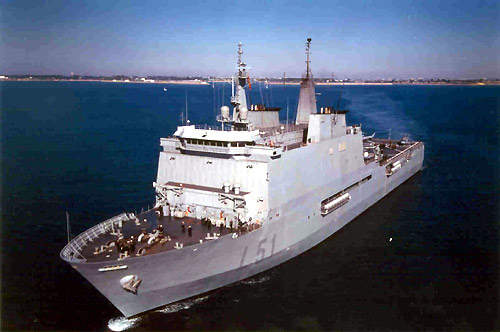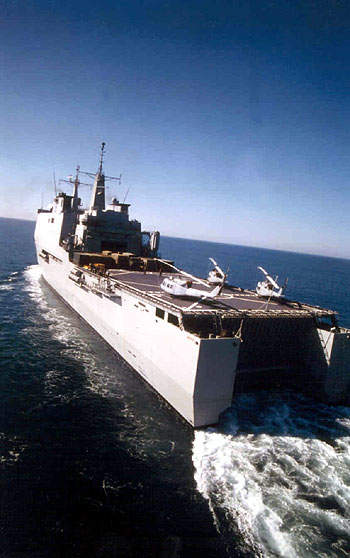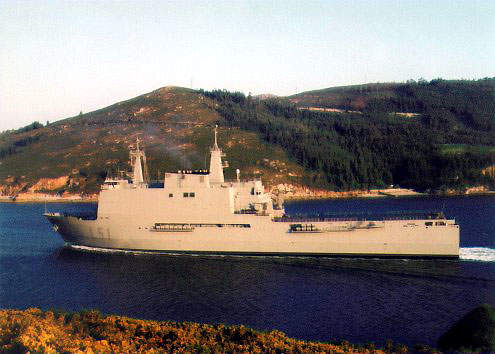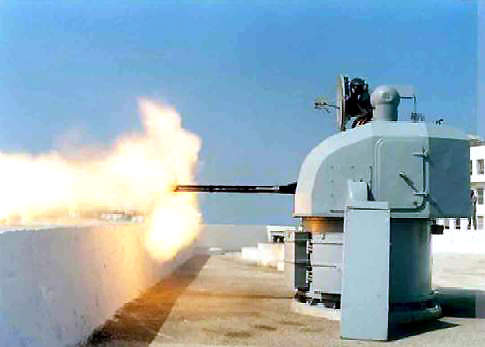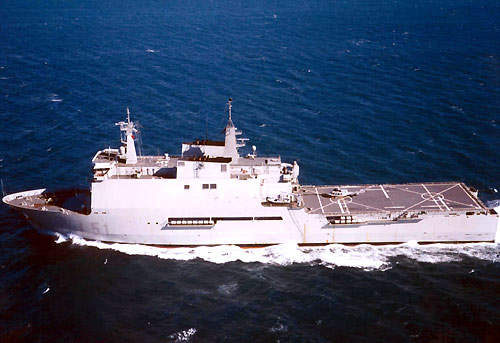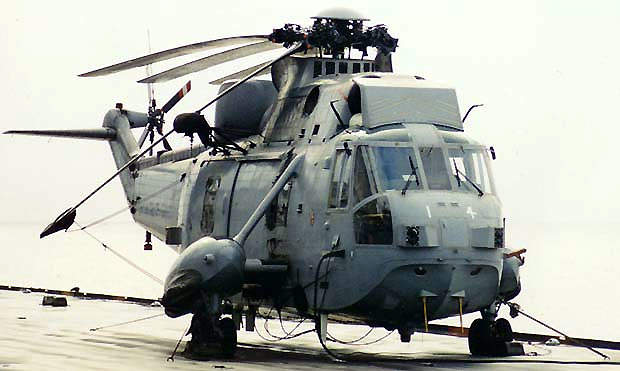The Galicia and the Castilla are 13,900t logistic support ships, based at the Rota, Cadiz, naval base in Spain. They are capable of a speed of 20kt and have a range over 6,000 nautical miles. They were built by Izar (then Bazan) at the Ferrol shipyard and the vessels were commissioned in 1998 and 2000, respectively.
In February 2005, the naval shipbuilding activities of Izar were spun off into a new company, Navantia.
The project definition phase of the development programme was carried out under a joint initiative between the Netherlands and Spain over a two and a half year period from mid-1991 to 1993. The Spanish Ministry of Defence placed orders on Bazan in 1994 for the Galicia (pennant number L51) during 1994, and for the Castilla (L52) in 1997.
To a similar design, the Royal Schelde Company built HRMS Rotterdam, commissioned in 1998, for the Royal Netherlands Navy.
The Galicia and the Castilla can be deployed in logistic support roles in both military and civil operations, e.g. humanitarian aid, disaster relief and other times of crisis.
Galicia class crew and accomodation
The Galicia operates with a crew of 115 and provides accommodation for 12 additional crew members. The ships are fitted with a nuclear, biological and chemical warfare decontamination and protection system. A fully equipped hospital is installed.
The Castilla operates with 179 crew members and has two dedicated operations centres, one for amphibious operations and one for combat group operations.
Weapons
The Galicia class is equipped with two 12-barrel 20mm Meroka close-in weapons systems fitted one to port and one to starboard at midship on the raised deck overlooking the helicopter deck. Meroka has a range of 2,000m and a rate of fire of over 1,400 rounds per minute. The CIWS fires APDS (armour piercing discarding sabot) high energy ammunition with a muzzle velocity of 1,290m/sec.
The Meroka 2B fire control system has FABA SPG-M2B monopulse doppler tracking radar, operating at I-band, an Indra (formerly ENOSA) thermal imager and automatic videotracker.
There are two 20mm Oerlikon guns on each side of the ship on the raised deck.
Contermeasures
The ship is also equipped with an electronic support measures radar intercept and four Super RBOC chaff launchers.
Logistics support and transport capabilities
The class can transport a full battalion of marines and their equipment. The Galicia can carry up to 543 fully equipped troops and an additional 72 aircrew, special operations staff or training crew.
The Castilla can carry up to 404 fully equipped troops and 72 special staff and air crew members.
An access hatch is installed on the port side of the ship. The vehicle area is over 1,000m² and can accommodate up to 130 armoured personnel carriers or 33 main battle tanks. The docking well provides an area of 885m².
The ship can transport up to six LCVP landing craft for vehicles and personnel or a combination of mechanical landing craft (LCM), utility landing craft (LCU) and vehicle and personnel landing craft (LCVP).
In May 2006, Navantia delivered the first two of 12 new LMCIE LCM landing craft for the Spanish Navy, to replace the LCM8 craft. The new LCMs have a speed of 37 km/h (20kt) and range of 305km (190 miles) at full load. Four lifts and a 2.5t crane are fitted for cargo handling.
Helicopters and flight deck
A helicopter flight deck (60m x 25m) is installed at the stern of the ship. The ship supports up to four heavy helicopters, e.g. the EH101 or six medium helicopters, e.g. the NH 90. The Spanish Navy at present operates Sikorsky SH-3 Sea King and Agusta Bell AB 212 helicopters. The helicopters are deployed for rapid offshore embarkation and de-embarkation operations.
Radar
The antenna for the Thales Naval Nederland (formerly Signaal) DA08 air and surface search radar is installed at the top of the foremast. The Castilla ship is equipped with a TRS 3D/16 surface search radar. The ships are also fitted with the Kelvin Hughes ARPA surface search radar operating at I band (8GHz to 10GHz).
Communications
The secure satellite communications dome is installed half way up the foremast above the bridge. The communications system is fitted with a Link 11 common datalink.
Propulsion
The ship is fitted with two Caterpillar 3612 diesel engines each rated at 9.2MW. The diesel engines drive two shafts with LIPS constant pitch propellers. A 500kW bow thruster is used for docking and precise station keeping.

